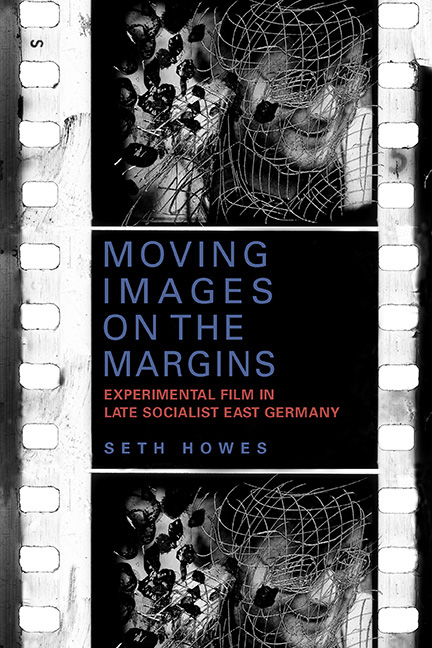Book contents
- Frontmatter
- Dedication
- Contents
- List of Illustrations
- Acknowledgments
- Introduction
- 1 Art, Experimentation, and the Avant-Garde in East Germany
- 2 Heraklesmaschine: Lutz Dammbeck's Experimental Cinema and the Expropriation of the Senses
- 3 Lines of Communication: Mail Art and the Connectivity of Experimental Film
- 4 Herz Horn Haut Schrein: Film and the Autoperforating Body of/at Work
- 5 Film Experiments, Design Anthropology, and the Politics of Vision: Yana Milev's Theory of Practice
- Conclusion: Images of Moving Margins
- Notes
- Bibliography
- Index
5 - Film Experiments, Design Anthropology, and the Politics of Vision: Yana Milev's Theory of Practice
Published online by Cambridge University Press: 21 March 2020
- Frontmatter
- Dedication
- Contents
- List of Illustrations
- Acknowledgments
- Introduction
- 1 Art, Experimentation, and the Avant-Garde in East Germany
- 2 Heraklesmaschine: Lutz Dammbeck's Experimental Cinema and the Expropriation of the Senses
- 3 Lines of Communication: Mail Art and the Connectivity of Experimental Film
- 4 Herz Horn Haut Schrein: Film and the Autoperforating Body of/at Work
- 5 Film Experiments, Design Anthropology, and the Politics of Vision: Yana Milev's Theory of Practice
- Conclusion: Images of Moving Margins
- Notes
- Bibliography
- Index
Summary
von den Marmorklippen!
Runter
—Yana MilevWe need to learn in our bodies, endowed with primate color and stereoscopic vision, how to attach the objective to our theoretical and political scanners in order to name where we are and are not, in dimensions of mental and physical space we hardly know how to name.
—Donna HarawayIN SEPTEMBER OF 1988, some six months after the Werkstatt ‘Junge Kunst’ II had taken place in the Berlin Academy of the Arts, Bildende Kunst devoted an entire issue to performance, installation, and process-oriented art. In part a ratification of international trends in the United States and the Soviet Union, and also elsewhere, the issue was also a response to the increasing visibility and viability of such artistic modalities at home, achieved through salons and workshops such as the Werkstatt ‘Junge Kunst’ II or the student-run Frühlingssalons (spring salons) that began to be organized in the Dresden HfBK in 1987. For the first time since the Monden debate of 1981/2, Bildende Kunst devoted substantial resources to discussing East German proponents of boundary-blurring artwork.
If the editors of Bildende Kunst had waited a month or two, they might have been able to include Nachtmär in their coverage of domestic developments. Running through the night of October 28 and into the morning of October 29, this ten-hour event reconstituted the academy's classrooms, studios, stairwells, and hallways as an obstacle course of performances and installations that often directly implicated visitors in the creative process. The Autoperforationsartisten's panem et circensis, discussed in the previous chapter, placed Brendel, Görß, and Lewandowsky on display as zoological specimens, while Else Gabriel passed messages and food between the bars separating the artists from their audience. Klaus Rudolf's Office for Direct Democracy transposed Joseph Beuys's eponymous project of the late 1960s onto the ‘societal condition of a real-existing socialism,’ with Rudolf challenging visitors to articulate their visions of democracy. And for their project Würgeengel (Choke-Angels), Frank Raßbach and the husband-and-wife duo Klaus and Gitte Hähner-Springmühl combined action painting and live free jazz performance in a space strewn with musical instruments, energetically scrawled diagrams, and performance utensils.
- Type
- Chapter
- Information
- Moving Images on the MarginsExperimental Film in Late Socialist East Germany, pp. 134 - 172Publisher: Boydell & BrewerPrint publication year: 2019



